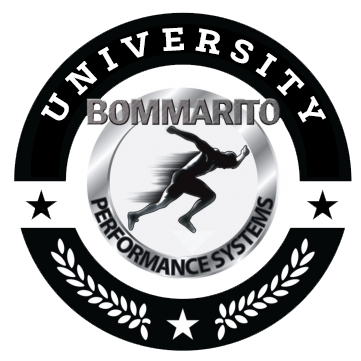One of the most common areas of issues for adults is knee pain/tendonitits. The easiest way to combat these ailments – and build a program to supplement your current activity level – involves a 3-step process:
- STABIILTY. The most efficient way to ensure the knee is stable, and the structure of the joint is supported properly by the muscles that cross it, is to perform isometrics. Isometrics involves contracting a muscle at a specific range without moving; as opposed to moving the joint like traditional exercise. Looking at the muscles of the thigh the cross the knee joint (and/or are involved in function of the knee), there is the 4 primary groups: muscles in the front (quads and hip flexors); in the back (hamstrings); on the inside (adductors); and outside (abductors). Progressions can begin at 3 seconds and progress up to 30 seconds for advanced adults.
- Advanced tip: Having a fitness professional assess any asymmetries (an imbalance) in the ranges of motion at the knee joint can help make the stability isometric program even more specific to your body.
- STRENGTH. Don’t be scared off by the term strength. This is not the typical term that people think of that means “how much weight can you lift.” This is simply just progressing the 4 main exercise listed above from isometrics to motion. Using the same 4 machines (or bands for advanced), a person can start to implement basic motions. The range of motion can start very small (just what a person can control), and start to increase as the knee becomes more stable through the isometrics. This style of progression can be specific to anyone. We’ve had a lot of success with this protocol from anyone like an older person that just needs to combat various levels of knee pain to get back to the active lifestyle that they enjoy; to the 25-year old advanced fitness enthusiast that wants to get the knee stronger in order to train more aggressively. The key to finding what will work for your goals is to control two major factors: the range of motion and the speed (tempo) of the motion.
- Advanced tip: If you are experienced with training, and already implement exercise such as squats and lunges – these exercise can still be for you – and lead to a lot more success (and less pain!) during the advanced training you are performing. Just complex (superset) the single joint exercises listed above into your current routine.
- ENDURANCE. This is the key to long term health! Once the joint is stable, and you have provide the necessary strength at all of the required ranges of motion – ensure the knee joint can now handle your chosen activity. Doing exercises like backward and forward marches at various speeds and distances can greatly enhance all of the necessary muscles from an endurance component. Note the key word MARCH. Endurance training can be simplified for joint integrity and reducing pain; as opposed to the typical form of “endurance” that people think is cardiovascular. The marching can just focus on local muscular endurance, which is necessary for continued pain management.
- Advanced tip: the use of resisted devices such as sleds, and pulley machines (outside) and the Keiser (inside) can make these exercises a lot more beneficial.
By: Pete Bommarito

